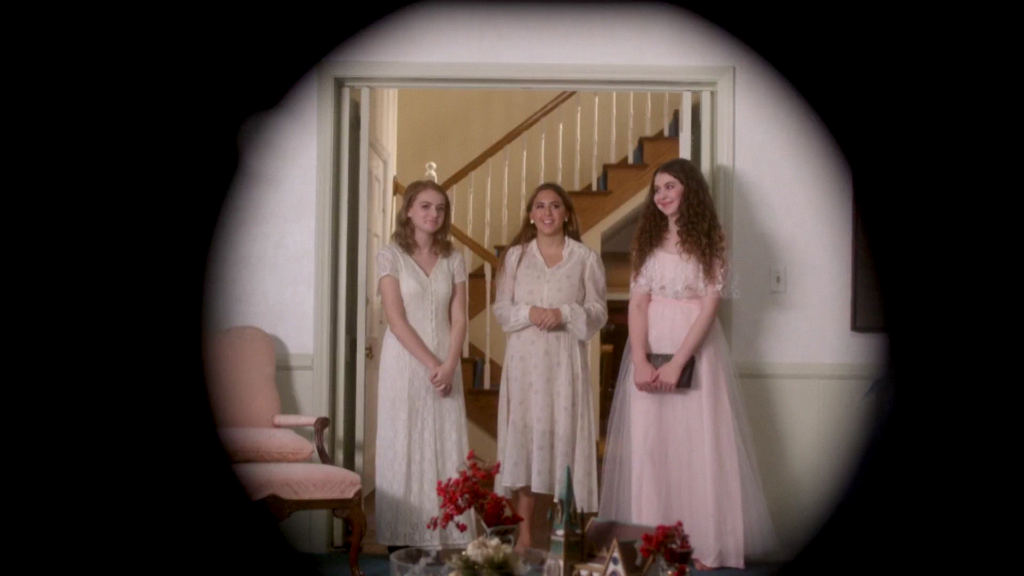
The passage of time from adolescence to early adulthood is an uncanny experience for I presume just about everyone, but the ephemerality of modern digital life must only make it worse. Researching the creative figures behind Ham on Rye (2020), what stuck out to me was the inevitability of certain voids. As recently as four years ago the film’s now-29-year-old director, Tyler Taormina, maintained a website for his then-new webseries Suburban Legends, which starred Haley Bodell as Poll Flowerpot, “a 12-year-old cynic [who] discovers the absurdities of the world;” the site is down now, but if you search around you can still find all three episodes on certain video-uploading hubs. Though of course Taormina can pull the episodes whenever he wants, or Youtube or Vimeo could take them down for any reason including none whatsoever, and then they’d be left to a small handful of hard drives, at most, where a random crash might erase them on any given sunday. Of course the same is true of books, films, and everything gathered under the sun—it all goes eventually. But what once had to burn or perish can now simply vanish between clicks, and without even the slightest hint of ceremony.
Probably more than anything else, Ham on Rye works to give young adulthood some of its ceremony back. That’s suggested from the start—a scene at a public park that under another director might’ve been rendered chaotic but that under Taormina’s eye is cut down into digestible insert shots which seem to archive each action or gesture: a hand trying to spark a cheap lighter, another working to retune a guitar, yet another grasping an ad-perfect glass of lemonade. This deliberately coy prologue begets the opening credits sequence (introducing characters with more close-ups of little details, like a tie being fastened or a nail being painted), which then feeds directly into the film’s real first section, where for about 20 minutes small cliques of seemingly high school-aged kids walk through various neighborhoods on their way to an unspoken happening that’s eventually revealed to be a literal ceremony at the center of Taormina’s debut feature.
Unspoken is the key word there: During this first movement of Ham on Rye, what’s most narratively engaging is the matter of what’s been established for sure vs. what’s left deliberately unclear. We’re not told when the film is taking place, or where the film is taking place, or even what’s the deal with this big local event all the kids are moving towards. What’s established instead are countless signifiers of a semi-contemporary American upbringing: from overarching universal stuff like scenes of characters preparing for something like a prom (three girls in frilly dresses being photographed by their overexcited parents, see above), and then carpooling there (the parents now waving at the door like the first day of school, another ceremony) to smaller details seen in briefer shots like the decor of a longhair musician’s car (beads on the rear view, bandana on the passenger seat), or a particularly rebellious-looking kid scraping a stick against a fence (which in this context can’t help but recall Tom Sawyer, ur-text of the American coming-of-age story—a narrative lineage that Ham on Rye is of course very much bound up in).
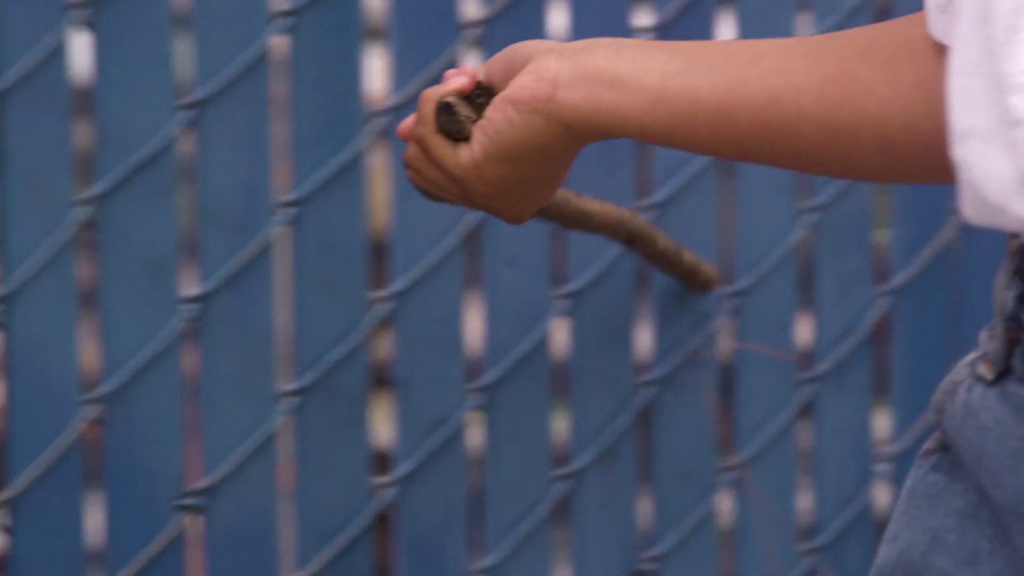
It’s “a day we’re going to remember for the rest of our lives,” says the opening dialogue, and the generic phrasing blurs certain lines to build upon the very particular biorhythmic point where Taormina’s movie takes place: A kid who says that might be talking about their prom, or about having sex, or about moving out, or maybe even about school graduation, among other possibilities—but no matter what, they’re probably talking about something meant to happen in the period that we’ve come to calling the teenage years. And so by the time it reaches the mythic ceremony that occurs near its halfway point, Ham on Rye has successfully conjured up a cinematic space where all those aforementioned experiences have been quite purposefully blended together, forming a sunlit anxiety dream of a generic suburban upbringing.
“My writing partner Eric Berger was very, very keen on being as cryptic and removed as possible from mentioning what is essentially the basic premise of the film,” explained Taormina, who’s from Long Island and based in Los Angeles, during a zoom call that also included the film’s producer/first assistant director David Croley Broyles and its cinematographer Carson Lund. “And I think we took that philosophy and mindset and applied it to everything. We didn’t want anything to seem like it was supposed to speak to some general moral or lesson, [but to] just let the mood and the vibe point in those directions instead… we could’ve very easily ruined the film with just a few lines of dialogue, I think, and Eric was very commandeering about us not doing that.”
What defines Ham on Rye instead—overwhelming all the foreshadowing and other narrative suggestions littered throughout its first half—are its faces (even the youngest ones seem tired and weathered, like kids in films made before our time), its sense of humor (which comes out via strange turns in dialogue and even stranger turns in performance, like a small boy’s mechanical golf-clap or a mom’s oversized chomps at lunch), and its numerous motifs, which include picture frames and oblique references to swine. Like for instance, one boy carries around this strange pig toy—which of course aligns with the film’s title as well as with another scene where someone refers to “porking [as] the ultimate purpose”—that eventually lands in the hands of an older character, who discards it with some disgust. More curious about the origin of the prop than about its meaning, I asked Taormina where the small plaything came from.
“Detail fetishism…,” he begins, before starting a new thought. “I just thought, I knew the actor, the kid we’d hired for that role, and I knew I wanted to have an object kind of move from the kid’s space to the [adult’s] space, and I also very pointedly wanted it to be handled very differently by these two people… I don’t know. I just wanted to make these dots between them, and there’s no real reason for it. I mean, pig, pork, ham—that’s all a thing isn’t it? But I am really interested in seeing how these objects flow from person to person, and then get cast out into space.”
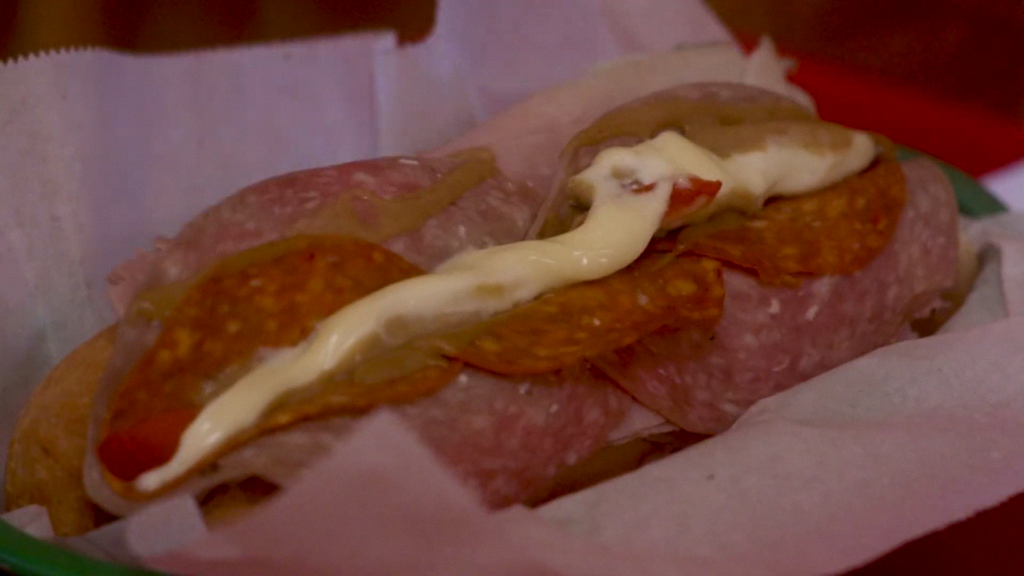
This interview with the Ham on Rye crew was facilitated by Lund, whose byline you might recognize from DigBoston itself. A longtime film critic for Slant Magazine among other publications, he began writing reviews for our paper earlier this summer—though I first met him long before that, in 2014, when we had a conversation at the Harvard Film Archive regarding the films of director Wojciech J. Has. So to both make and spruce up the required disclosure, let me say that I not only consider Carson Lund a close friend, but that I also consider myself a dedicated fan—of his film criticism (which also includes notes for the programs of the Harvard Film Archive), his music, and now of course his filmmaking practice, which in addition to his cinematography for Taormina’s feature also includes a short film that he produced and directed in 2016, Starr Farm, and a screenplay that he co-wrote and hopes to direct sometime in the near future.
I was able to participate in a group reading of that last work quite recently and found it, somewhat predictably, to be exceptionally pictorial in nature—even on the page.
“We talked about pointillism too,” said Lund during the call. “Gleaning a sense from all these excessive details, these things you don’t strictly need to see for the sake of narrative momentum, but that maybe overwhelm the characters, who are young, angsty, and kind of overwhelmed by life. I think in the first half the film is trying to make that same impression for the viewer a little bit—all of this excess, all of this gravity that’s applied to the mundane but ends up meaning so much [later on]… that attention to the details of mise en scène was part of what made me interested in working on it.
“I was like, this is going to be fun to shoot—it’s like shooting a bunch of still lifes,” he continued. “And then, also being from the suburbs myself, you’re dealing with these signifiers that are very familiar to me. Like a hoagie sandwich filled with meat and lettuce, that’s a quintessential American suburban item.”
The hoagie sandwiches arrive right before the ceremony itself, which blends the standard beats of school dances with suggestions of awkward youthful sex and celebratory school graduations, not to mention just about every other young-adult maturation ritual you can think of, at a spot named Monty’s Deli.
“It’s such a music-driven film—we’re all musicians—and one of the things we did talk about a lot in preparation, especially for the Monty’s party sequence, was 80s music videos,” Lund mentioned later. “Which have a bit of psychedelia to them, and that gauzy look. We were pulling from those reference points a little bit. And Tyler loves grunge from the 90s. We had done a music video right before going into production on this that was very psychedelic, with a lot of superimpositions and really garish lighting schemes, so maybe that was feeding into it as well.”
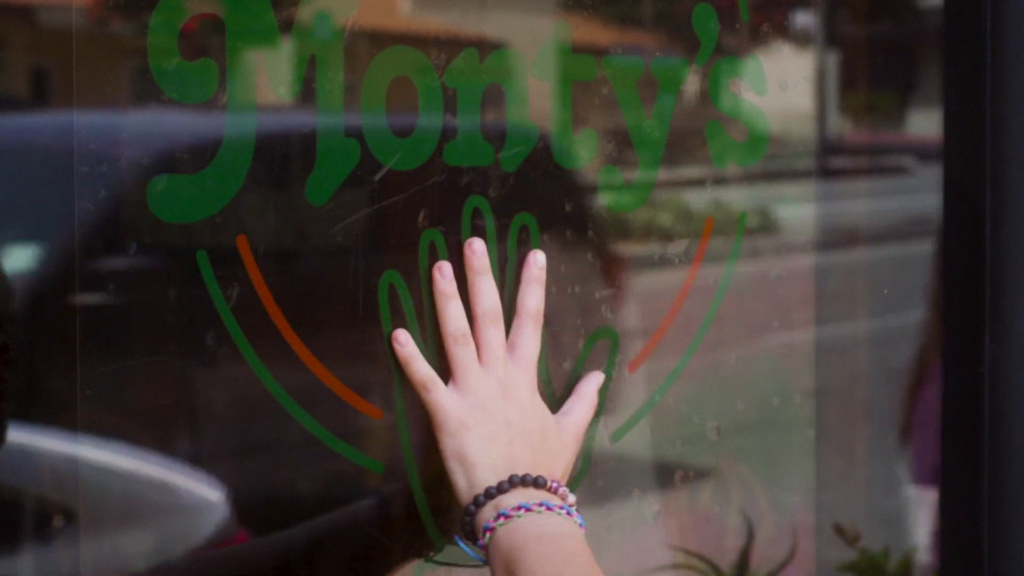
As Lund has written about himself in an indispensable piece for Filmmaker Magazine headlined “Over 100 Cast Members and No Permits: How I Shot Ham on Rye in Los Angeles”, the film’s faceless neighborhood locations were stolen from various spots across that city—so for example Ham on Rye’s semi-decontextualized meeting spot Monty’s is in real life actually Berge’s, a deli in the La Cañada Flintridge area of Los Angeles County. But part of what makes Ham on Rye special is how dutifully it avoids the lack of depth that usually accompanies utilizing deliberately generic settings. Its depiction of the American Suburbs feels less like a screenwriter’s nostalgia trick and more like the visual translation of a genuinely mental image, rich with detail and specificity.
“The vista of the road was super important, or houses that were pushed far back from the curb,” said Taormina. “That was very hard to find. Mailboxes were very hard to find. But things like that were very important [to me]. And that’s the beauty of LA: there’s so many different landscapes to choose from… you go two hours outside LA in any direction, and [you can find] anything.”
“Which also helped because we were looking for a sense of the economic differences in the town,” added Lund. “So not only do we shoot La Cañada as the stand-in for our kind of upper middle-class neighborhood, but we also shoot in the deeper parts of the Valley more north, like Sylmar, where it [suggests a different class].”
“Yeah, Sylmar was more the latter half of the film, feeling all the dread and the emptiness,” continued Broyles. “A lot of that was captured in Sylmar.”

All the dread and the emptiness is what comes up after the big Monty’s scene, when day turns to night, and when most of Ham on Rye’s first-half cast disappears from the picture. Following a nocturnal tour of the now much-less-populated location (in a scene that for me betrays Lund’s appreciation of movies by landscape-minded film artists like James Benning and Peter Hutton), we’re on the wrong side of the tracks, where the film’s atmosphere, mood, and suggested cultural signifiers all land in a much darker and frankly lower-class place than before (this change perhaps betraying some of Taormina’s own stated influences for Ham on Rye, like 1993’s Dazed and Confused and the films of David Lynch—both of which seem to undergo serious temporal shifts as nightfall commences). One also notices that while before the dialogue was ambiguously foreshadowing, now it’s ambiguously looking backwards (the way Lund put it is, “in the second half the dialogue becomes more textural than expository.”) And this all leads to a backyard cookout populated by a large group including some faces at least vaguely familiar to viewers of the millennial demographic: Lori Beth Denberg of All That (1994-98), Danny Tamberelli and Aaron Schwartz of The Mighty Ducks (1992) and The Adventures of Pete & Pete (1992-96), and Clayton Snyder of Lizzie McGuire (2001-04).
The one character that carries over from the pre-ceremony segments to the post- is Haley, played by the same Haley Bodell of Suburban Legends, whose only acting credits to date are for Taormina. Like a spectre left haunting the grounds after her fellows have moved on, the Haley character spends the second half of Ham on Rye in emptied-out spaces like bedrooms and street curbs, completing the articulation of a metatextual idea first initiated by those kids’-television cameos—the image of the child stars left behind.
“[Bodell and I] worked on Suburban Legends, then a short film Wild Flies, and finally Ham on Rye,” Taormina said. “She was 12, and now she’s 18 going on 19… The fun little tidbit I like to say about working with her on these projects is that I only realized during the rehearsals, which was a months-long process, that the character of Haley in Ham on Rye is actually the same character as Poll Flowerpot from Suburban Legends but grown up… in Suburban Legends, her curiosity always brings her closer to other people—that’s what her youth afforded to her. But now, you see her curiosity throughout the first act of Ham on Rye, and what does it give her? Nothing but alienation.
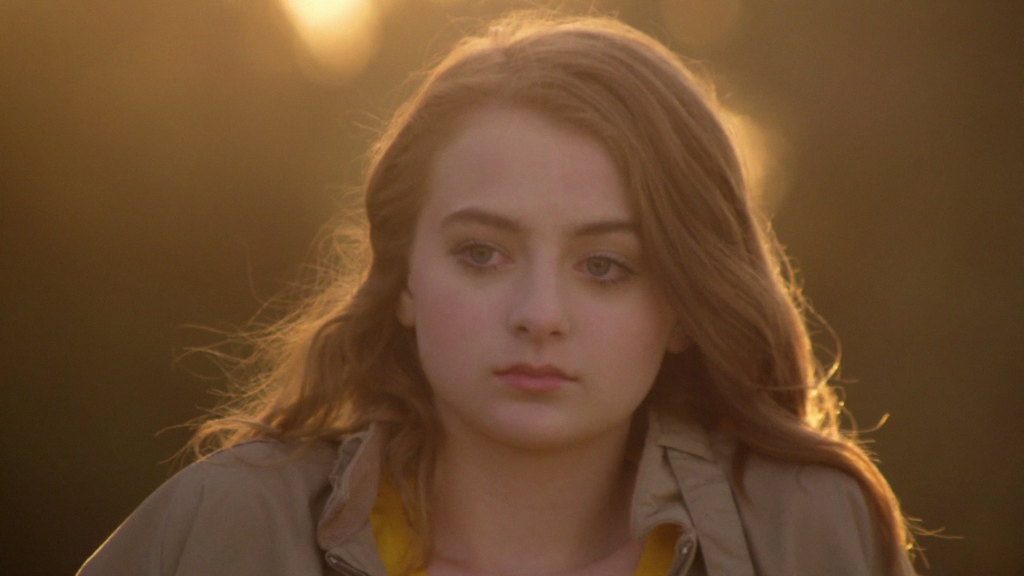
“It’s kind of about how you grow up and curiosity—especially curiosity about systems and societal functions—is not welcomed. And it’ll cause you a lotta grief. So, it’s not cute anymore, was the realization I made about her character.”
I think you could read Ham on Rye along those exact lines—it’s not cute anymore—and come away with a pretty fair understanding of the film.
Same goes for something that Taormina said to AwardsDaily in early 2019, which seems way too key not to reproduce here: “The script was born through that feeling of nervous confrontation to [rituals] and then it bloomed into ‘What happens to those who don’t get selected?’,” he said back then. “It became about the suburbs I grew up in, and those teenagers left when college began and they didn’t come back and a whole generation of teenagers disappeared and who was left? People who were on heroin. I was exploring that context.”
Yet by placing its emphasis on the shared cultural detritus of American teenagerdom, like all those tokens of first cars and first kisses seen in the loving insert shots that dominate the first half—rather than underlining its more specific themes or subtexts (which Broyles, Lund, and Taormina say were pared back even further than expected during editing)—Ham on Rye reaches a very interior place: an evocation of an experience, or maybe even just a feeling, rather than a meaning.
So of all the quotes we could end on I’m most partial to one that centers the unconscious, just like the film itself.
“Transgression becomes even more unfathomable when an entire global generation seems to share the same path in gentrifying the cities,” Taormina wrote for an interview published by Film Comment (also suggesting one of his film’s many productive contradictions—that it’s a lament for the loss of a suburban experience produced almost exclusively in urban spaces). “In this case, the transgression is, oddly enough, staying at home with your family—and it’s definitely not a ‘cool’ one. This is a confusing taboo that weighs very heavily on me—in fact, I feel it may have in a way forced me away from home. Now, as a memory growing more distant every day, all that’s left is the dreamlike impressions of these places I’ve loved so much and then abandoned. They literally haunt my dreams.”
Ham on Rye opened at the Brattle Theatre’s Virtual Cinema on October 23, where it remains available to rent now. For a complete list of virtual cinemas exhibiting the film, see factorytwentyfive.com/hamonrye.

